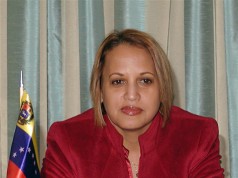RAWALPINDI,
has told U.S. military leaders it is willing to help train Afghan
soldiers to fight Taliban forces, the country’s army chief said Monday,
a promising gesture by a government at times skeptical of
Gen.
Stressing the importance of having a stable, secure
“We’re talking to the U.S. and (NATO forces). We are
interested in getting more involved in training of the Afghan national
army,” Kayani said during a briefing inside the Pakistani army’s
heavily guarded headquarters in the garrison city of Rawalpindi. “This
is good for the short term and the long term.”
The training of
national army and its police is seen as a vital cog in Obama’s strategy
to defeat the Taliban and ready the country for the eventual withdrawal
of U.S. troops.
In an assessment of the Afghan war released last fall, the commander of U.S. and NATO forces in
said the Afghan army’s contingent of 92,000 troops needed to be ramped
up to 134,000 by October, while the Afghan police force needed to grow
from 84,000 to 160,000.
Progress in readying
security forces, McChrystal said in his assessment, “is critical in
order to preserve the sustained commitment and support of the
international community.”
The development of
security forces has been slow. The Afghan army is burdened by
corruption, meager pay and a lack of instructors. In December, Agence
France Presse quoted a German commander with NATO forces in
One of
“If you want the Afghan army to take over security, it’ll take four years to do it,” Kayani said.
Kayani said stabilizing
a country locked in its own battle with Taliban insurgents responsible
for waves of suicide bombings that have struck crowded markets,
security installations and mosques.
“Our objective is to have a peaceful, stable and friendly
After Kayani’s briefing, army spokesman Maj. Gen.
Athar Abbas told reporters that the army was still trying to determine
whether Pakistani Taliban leader Hakimullah Mahsud died from injuries
suffered in a
Pakistani state television reported that Mahsud’s
body was buried last week in the Orakzai region, a district within the
country’s volatile tribal areas along the Afghan border. Abbas said
Sunday that Mahsud was wounded in the
“There is no credible evidence yet” that the Taliban
leader died of his wounds, Abbas said Monday. A Pakistani Taliban
spokesman,
killed, and said the insurgent group would soon release a video showing
that the Taliban leader was still alive.
Mahsud took over leadership of the Pakistani Taliban
after his predecessor, Baitullah Mahsud, was killed in a U.S. drone
strike last August. Last fall, Hakimullah Mahsud unleashed a wave of
suicide bombings and commando-style raids across the country in
retaliation for the government’s launching of an offensive in
—
(c) 2010, Los Angeles Times.
Visit the Los Angeles Times on the Internet at http://www.latimes.com/
Distributed by McClatchy-Tribune Information Services.













